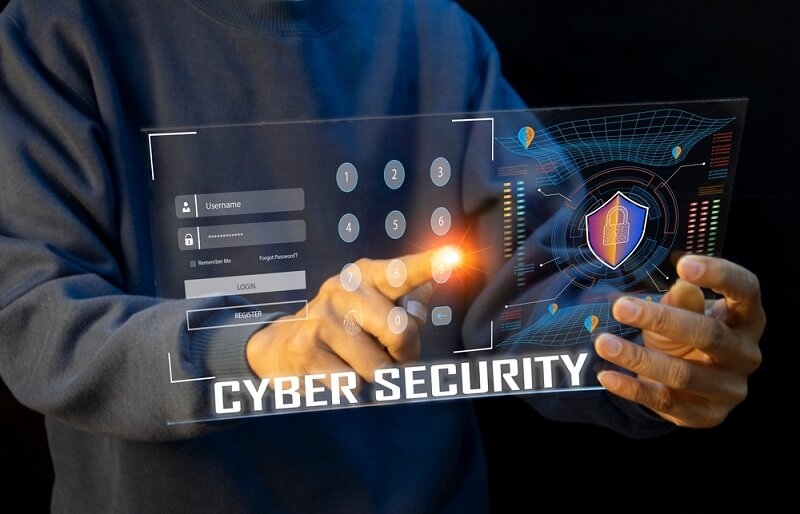
Small businesses are more connected and vulnerable in a globalized, digital-first world. While large enterprises are commonly featured in the news after experiencing a cyberattack, small companies across the USA are gradually becoming primary targets. The answer? Implementing a minimum standard of essential cybersecurity practices is necessary for every small U.S. business to protect operations, customer data, and future growth potential.
Cybersecurity isn't optional these days. Cybercriminals take a one-size-fits-all approach to various cybercrimes, such as malware, phishing, ransomware, and insider threats. They don't care about the target size in their attack and often view small businesses as easier targets due to inadequate budgets, outdated systems, and a lack of awareness.
This guide presents real-world, affordable ways to protect your business using a proven cybersecurity checklist in the USA. Then, we'll look at how to train your staff on cybersecurity, the best affordable cybersecurity tools to implement, and ultimately, how to make sustainable decisions to protect small business data in the long term.
Contrary to the assumed mentality behind the hacker, we often hear of cases when hackers are not primarily attacking for multi-million-dollar ransoms. Instead, as has been recently characterized by some failures on the part of cybercriminals, many of their attacks target easier targets, such as those businesses with low levels of protection and poor digital hygiene.
1. No skilled individuals with cybersecurity expertise
2. Outdated software & systems
3. Limited training for staff on cyber risks
4. Weak password & access controls
5. Little or no incident response planning
All too often, the hacker exploits those weak points, usually using automation and targeting thousands of small firms at once. Therefore, small businesses must adopt good cybersecurity practices as essential, just as they would treat an accountant or a marketing plan as a priority in their business plans.
Before deploying tools, each business must have an established knowledge of risk and defenses.
So, let's now look at the top cybersecurity practices U.S. small businesses need to implement to build a responsive digital ecosystem.
Any organization, regardless of size, should have a written cybersecurity policy. The policy should clearly outline acceptable behavior, rules regarding passwords and software, and steps to take if an incident does occur.
Your written policy should include:
The written policy should serve as the basis of your staff's cybersecurity training and protect your organization from inadvertent errors.
Passwords remain the most exploited security weakness across all industries. Enforce a password policy that requires complexity and regular updates.
Even if a password is stolen, MFA adds a second line of defense that stops most attackers in their tracks.
Your employees are your first—and often your weakest—line of defense. Practical staff cybersecurity training turns them into human firewalls.
Conduct training at onboarding and regularly throughout the year. Simulated phishing attacks and refresher quizzes can improve retention and alertness.

Outdated systems are one of the most common ways hackers infiltrate businesses. Patching software closes known security holes.
This simple habit is one of the most powerful cybersecurity practices any business can implement at little to no cost.
Firewalls are a barrier between your internal network and the internet, while antivirus software detects and eliminates device threats.
Several affordable cybersecurity tools are explicitly designed for small businesses, providing robust protection without complexity or excessive cost.
Data loss through cyberattacks, accidental deletion, or hardware failure can be devastating. Regular backups ensure business continuity and peace of mind.
This step is a core part of small business data protection, reducing the impact of data breaches or system failures.
Not every employee needs access to all data. Implement role-based access control to reduce internal risks.
This simple change can prevent accidental exposure or malicious actions by disgruntled insiders.
If your Wi-Fi isn’t secure, neither is your business. Hackers can intercept traffic, access devices, or install malware via an unprotected wireless network.
Physical network security is just as crucial as online measures, especially for brick-and-mortar businesses.
Monitoring gives you insight into what’s happening on your network, helping you detect issues before they spiral.
Many lightweight, affordable cybersecurity tools automate real-time monitoring and alert you to threats.
Despite your best efforts, breaches may happen. Having a plan in place helps minimize damage and resume operations quickly.
Please practice your plan with your team regularly. Clarity and speed are critical in a crisis.
If you collect customer data—names, addresses, emails, payment info—you’re responsible for keeping it secure.
Failure to secure customer data can lead to lawsuits, loss of trust, and regulatory penalties.
Many small businesses rely on third-party services for operations. These providers must follow strong cybersecurity practices as well.
If a supplier gets hacked, your business could suffer too. Please be sure to stay vigilant when reviewing all third-party platforms.
In 2025, small businesses can no longer consider cybersecurity a side issue. Cyberattacks threaten profits, reputations, relationships, and the company's long-term existence.
The best news for small businesses is that strong protection doesn’t require a huge budget. With affordable cybersecurity tools, proactive planning, and complete staff cybersecurity training, small businesses in the U.S. can protect themselves from the most common digital threats today.
Following these basic cybersecurity practices will allow your business to operate confidently, serve your customers securely, and focus on growing your business without the looming uncertainty of what’s happening on your network.
Don’t wait until a breach happens to get moving on securing your business today.
This content was created by AI